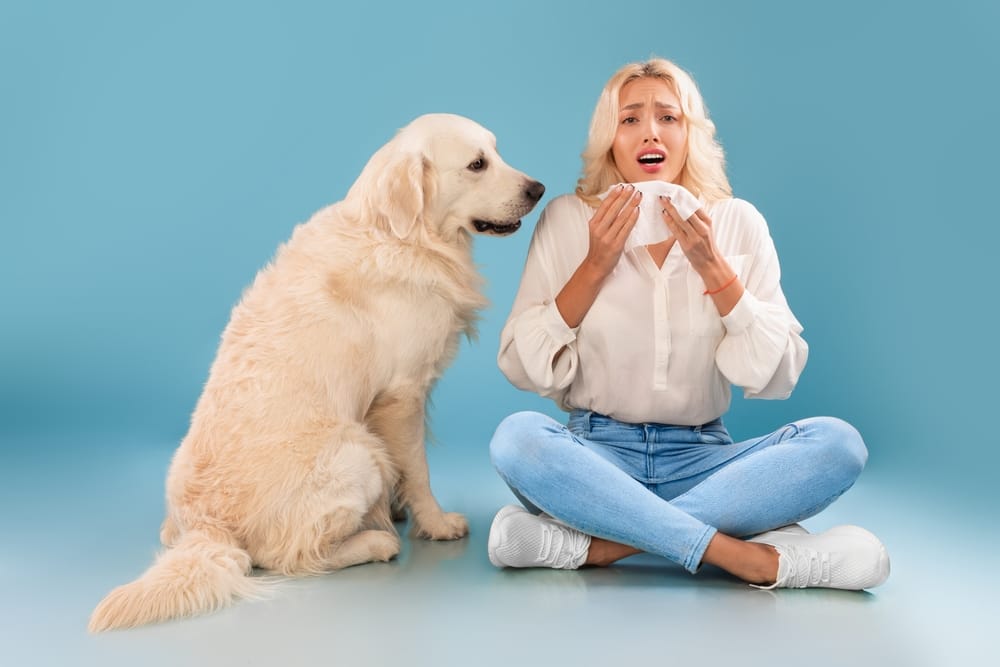As a dog owner, it can be challenging to care for your furry friend who suffers from allergies. Regular grooming is an essential part of managing your dog’s allergies and ensuring their comfort. In this blog post, we will discuss some tips on how to groom a dog with allergies effectively.
Regular Dog Grooming is a Must
Use Hypoallergenic Shampoo
When it comes to grooming a dog with allergies, the first thing to consider is the shampoo you use. Regular dog shampoos may contain ingredients that can irritate your dog’s skin and exacerbate their allergy symptoms. Therefore, it is essential to use a hypoallergenic shampoo that is specially formulated for dogs with sensitive skin.
Bathe Your Dog Regularly
Bathing your dog regularly is crucial for managing their allergies. It helps to remove allergens from their skin and coat, reducing the severity of their allergy symptoms. However, be careful not to over-bathe your dog as this can dry out their skin and make their allergies worse. Generally, bathing once a week or every other week is sufficient for dogs with allergies.
Brush Your Dog’s Coat Regularly
Regular brushing helps to remove loose hair, dirt, and allergens from your dog’s coat, reducing the risk of allergic reactions. Brushing also stimulates the production of natural oils in your dog’s skin, keeping their coat healthy and shiny. However, be sure to use a brush that is gentle on your dog’s skin, such as a rubber brush or a soft-bristled brush.
Use a High-Quality Air Purifier
Allergens such as dust, pollen, and mold spores can trigger allergy symptoms in dogs. Using a high-quality air purifier can help to remove these allergens from the air, creating a healthier environment for your dog. Be sure to choose an air purifier that is suitable for the size of your home and has a HEPA filter to capture small particles.
Keep Your Home Clean
Regular cleaning is essential for managing your dog’s allergies. Vacuuming carpets and upholstery, dusting surfaces, and washing bedding can help to remove allergens from your home. Be sure to use a vacuum cleaner with a HEPA filter to capture allergens, and avoid using harsh chemicals that can irritate your dog’s skin.
Keep Your Dog Away from Allergens
Identifying and avoiding allergens is crucial for managing your dog’s allergies. Common allergens for dogs include pollen, dust mites, and mold spores. You can minimize your dog’s exposure to these allergens by keeping them indoors during peak allergy season, avoiding areas with high pollen counts, and using air conditioning to filter allergens from the air.
Consult with Your Veterinarian
If your dog’s allergies are severe or difficult to manage, it may be helpful to consult with your veterinarian. They can perform allergy tests to identify the specific allergens that are causing your dog’s symptoms and recommend appropriate treatments, such as antihistamines or immunotherapy.
Use hypoallergenic grooming products
Many dogs with allergies are sensitive to certain chemicals and fragrances in grooming products. To avoid triggering a reaction, use hypoallergenic shampoos, conditioners, and other grooming products. These products are specially formulated to be gentle on sensitive skin and contain fewer potentially irritating ingredients.
Trim your dog’s hair
Long hair can trap allergens like pollen and dust, which can exacerbate your dog’s allergies. Keep your dog’s hair trimmed short to reduce the amount of allergens that get trapped in their coat. You can do this yourself with clippers or scissors, or take your dog to a professional groomer.
Clean your dog’s ears
Dogs with allergies are prone to ear infections, which can be painful and uncomfortable. To reduce the risk of infection, clean your dog’s ears regularly. Use a gentle ear cleaner recommended by your vet, and be sure to dry your dog’s ears thoroughly after cleaning.
Pay attention to your dog’s diet
Diet can play a big role in managing allergies in dogs. Talk to your vet about whether your dog’s diet may be contributing to their allergy symptoms. They may recommend switching to a hypoallergenic dog food or eliminating certain ingredients from your dog’s diet.
Consider allergy medication
If your dog’s allergies are severe, your vet may recommend allergy medication. This can include antihistamines, steroids, or immunotherapy. These treatments can help reduce allergy symptoms and improve your dog’s quality of life.
Grooming a dog with allergies can be challenging, but it’s important to keep up with it to keep your dog healthy and comfortable. By using hypoallergenic products, brushing regularly, trimming your dog’s hair, cleaning their ears, bathing them regularly, paying attention to their diet, and considering allergy medication, you can help manage your dog’s allergies and keep them happy and healthy. If you’re not sure where to start, talk to your vet for guidance and support.
In conclusion, grooming a dog with allergies requires a little extra care and attention, but it is essential for your dog’s comfort and well-being. By following these tips, you can help to manage your dog’s allergies and create a healthier environment for them to thrive.





